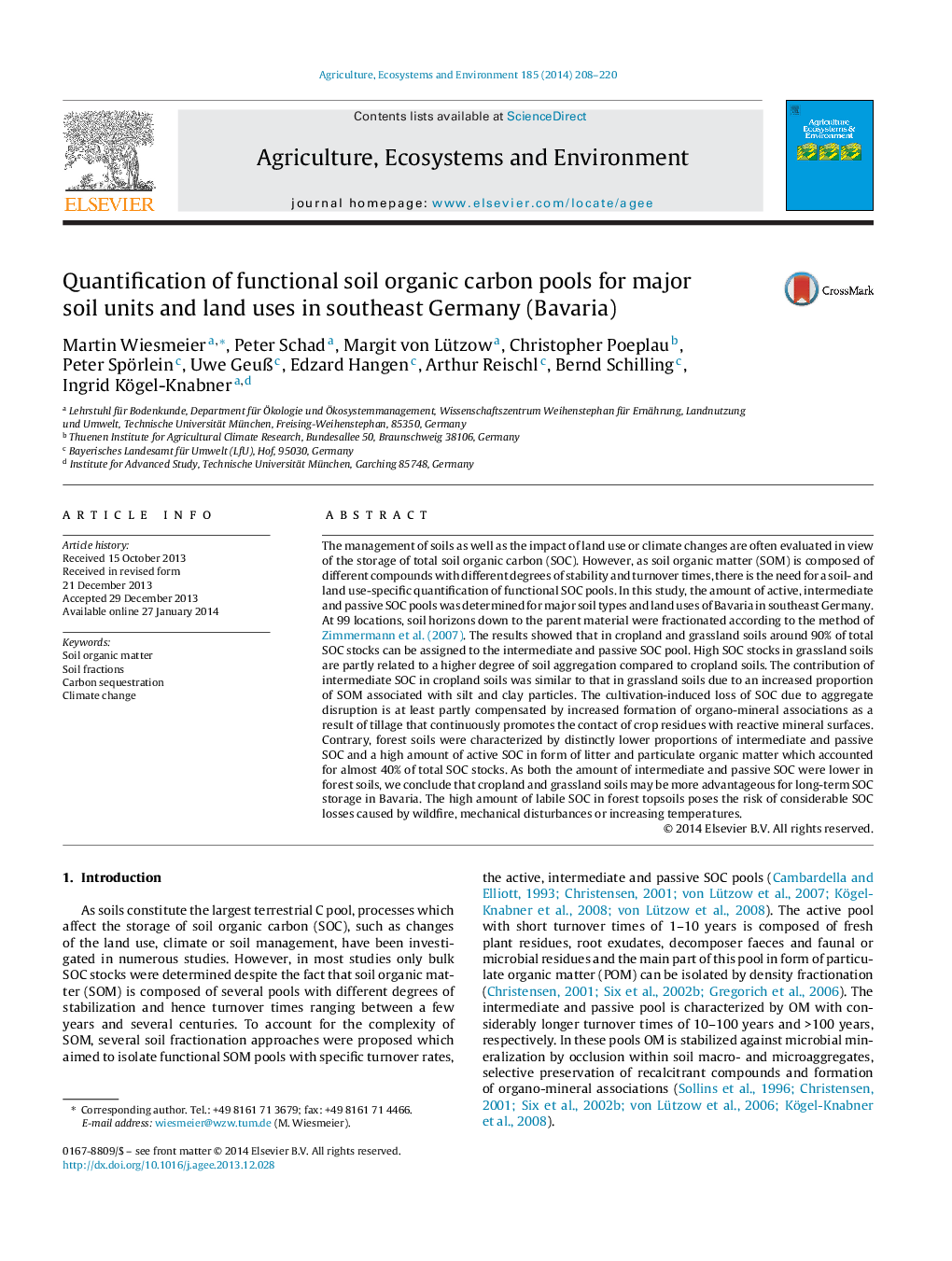| Article ID | Journal | Published Year | Pages | File Type |
|---|---|---|---|---|
| 2414083 | Agriculture, Ecosystems & Environment | 2014 | 13 Pages |
•Functional SOC pools of 99 soil profiles were quantified using soil fractionation.•90% of SOC stocks of agricultural soils can be assigned to intermediate/passive SOC.•In forest soils 40% of SOC stocks as active SOC in form of litter and POM.•Agricultural soils more advantageous for long-term SOC storage than forest soils.•Potential SOC loss in forest soils due to wildfire, disturbances and climate change.
The management of soils as well as the impact of land use or climate changes are often evaluated in view of the storage of total soil organic carbon (SOC). However, as soil organic matter (SOM) is composed of different compounds with different degrees of stability and turnover times, there is the need for a soil- and land use-specific quantification of functional SOC pools. In this study, the amount of active, intermediate and passive SOC pools was determined for major soil types and land uses of Bavaria in southeast Germany. At 99 locations, soil horizons down to the parent material were fractionated according to the method of Zimmermann et al. (2007). The results showed that in cropland and grassland soils around 90% of total SOC stocks can be assigned to the intermediate and passive SOC pool. High SOC stocks in grassland soils are partly related to a higher degree of soil aggregation compared to cropland soils. The contribution of intermediate SOC in cropland soils was similar to that in grassland soils due to an increased proportion of SOM associated with silt and clay particles. The cultivation-induced loss of SOC due to aggregate disruption is at least partly compensated by increased formation of organo-mineral associations as a result of tillage that continuously promotes the contact of crop residues with reactive mineral surfaces. Contrary, forest soils were characterized by distinctly lower proportions of intermediate and passive SOC and a high amount of active SOC in form of litter and particulate organic matter which accounted for almost 40% of total SOC stocks. As both the amount of intermediate and passive SOC were lower in forest soils, we conclude that cropland and grassland soils may be more advantageous for long-term SOC storage in Bavaria. The high amount of labile SOC in forest topsoils poses the risk of considerable SOC losses caused by wildfire, mechanical disturbances or increasing temperatures.
